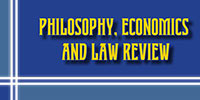Anastasiia DIDENKO
Ph.D. (Economics), Associate Professor (Dnipropetrovsk State University of Internal Affairs), Ukraine
ORCID iD: orcid.org/0000-0003-1136-403X
didenko.naya@gmail.com
Yevheniia KOVALENKO-MARCHENKOVA
Ph.D. (Economics), (Dnipropetrovsk State University of Internal Affairs), Ukraine
ORCID iD: orcid.org/0000-0001-7350-7740
kovalenko.marchenkova@gmail.com
Olena KRAVETS
Ph.D. (Economics), (Classic Private University), Ukraine
ORCID iD: orcid.org/0000-0002-2980-5238
ekonom.kpu@gmail.com
Rafał LIZUT
Ph.D. hab. (Economics), Ph.D. (Philosophy), MSc (The John Paul II Catholic University of Lublin), Poland
ORCID iD: orcid.org/0000-0002-6067-1469
k_aem@dduvs.in.ua
UDC 330.4 : 330.3
DOI :10.31733/2786-491X-2021-2-92-100
Keywords: Quality of life, Cognitive Modeling, Static analysis, digraph, Socio-economic indicators
Abstract. Assessing the position of economic and human capital development level, building a strategy to improve the quality of life is extremely important for the state, so the study of indicators that form the quality of life and have the greatest impact on it remains relevant. Since the very concept of quality of life is a multicomponent category, characterized by both objective and subjective indicators, we consider it appropriate to structure knowledge about the factor environment that shapes the quality of life, their reflection by forming a cognitive model, its static analysis to identify the factors that have the greatest impact on quality of life to improve its level, which reflects the purpose of the study. A cognitive model of quality of life in the form of a balanced digraph was built based on 22 indicators of socio-economic conditions of Ukrainian households, grouped into four groups: population, education and health, socio-economic indicators. Structural analysis of the cognitive model made it possible to assess the classes of factors, establish the system characteristics of the model, identify the factors that have the greatest impact on the system, and assess their importance in modeling the self-development of the situation. Considering the weights of factors and external influences, it is determined that the assessment of the quality of life is most influenced by a group of health factors, while the growth of the quality of life indicator contributes most to the growth of the population and reduces its migration.
References
- Andereck, K., & Nyaupane, G. (2011). Exploring the nature of tourism and quality of life perceptions among residents. Journal of Travel research, 50(3), 248-260.
- Brych, V., Manzhula, V., Halysh, N., Kalinichuk, N., Reznik, N., & Hrynchak, I. (2021). Modeling the Dynamics of Living Standards Based on Factors of the Remuneration System in 2021. 11th International Conference on Advanced Computer Information Technologies (ACIT), 420-423.
- Bucur, A. (2017). How can we apply the models of the quality of life and the quality of life management in an economy based on knowledge? Economic Research, 30(1), 629-646, https://doi.org/10.1080/1331677X.2017.1314821.
- Cherenko, L. (2021). The standard of living in conditions of socio-economic instability. Kyiv: Ptoukha Institute for Demography and Social Studies of the National Academy of Sciences of Ukraine. (in Ukranian).
- Croes, R., Ridderstaat, J., & van Niekerk, M. (2018). Connecting quality of life, tourism specialization, and economic growth in small island destinations: The case of Malta. Tourism Management, 65, 212-223.
- Decision support system “Igla”, http://iipo.tu-bryansk.ru/quill/index.html.
- FCMappers, http://www.fcmappers.net.
- Kravets, О. & Didenko, A. (2021). Modeling the quality of life of the population of Ukraine based on indicators of socio-economic situation. Theoretical and methodological approaches to the formation of a modern system of national and international enterprises, organizations and institutions’ development. USA: Primedia eLaunch LLC, https://doi.org/10.36074/tmafmseoid.ed-2.08. (in Ukrainian).
- Kravets, О. & Kucherova, H. (2019). Simulation modeling of the level of socio economic development as an indicator of the state of security of the country. Actual problems of economics, 5, 4-13. (in Ukrainian).
- Kucherova, H., Didenko, A., Kravets, O., Honcharenko, Y., & Uchitel, A. (2020). Scenario forecasting information transparency of subjects’ under uncertainty and development of the knowledge economy. CEUR Workshop Proceedings, 2713, 81-106, http://ceur-ws.org/Vol-2713/.
- Maggino, F., & Zumbo, B. (2012). Measuring the quality of life and the construction of social indicators. In Kenneth C. Land, Alex C. Michalos, & M. Joseph Sirgy (Eds.). Handbook of social indicators and quality of life research (201-238). Dordrecht: Springer.
- Napoles, G., Espinosa L., Grau I., & Vanhoof, K. (2018). FCM Expert: Software Tool for Scenario Analysis and Pattern Classification Based on Fuzzy Cognitive Maps. International Journal on Artificial Intelligence Tools, 27(7), 1-25, https://doi.org/10.1142/S0218213018600102.
- Novakova, B., & Soltes, V. (2016). Quality of Life Research: Material Living Conditions in the Visegrad Group Countries. Economics and Sociology, 9(1), 282-294, https://doi.org/10.14254/2071-789X.2016/9-1/1.
- Quality of Life Index by Country 2020. (2021), https://www.numbeo.com/quality-of-life/rankings_by_country.jsp?title=2020.
- Quality of life indicators, https://ec.europa.eu/eurostat/statistics-explained/index.php?title=Quality_of_life_indicators.
- Rahman, T., Mittelhammer, R., & Wandschneider, P. (2011). Measuring quality of life across countries: A multiple indicators and multiple causes approach. The Journal of SocioEconomics, 40(1), 43-52.
- Silov, V. (1995). Making strategic decisions in a fuzzy environment. Moscow: INPRO-RES. (in Russian). State Statistics Service of Ukraine, http://www.ukrstat.gov.ua/.
- Stavytskyi, А. & Molokanova, К. (2020). Modelling quality of life in Ukraine and European countries. Bulletin of Taras Shevchenko National University of Kyiv. Economics, 6(213), 20-31, https://doi.org/10.17721/1728-2667.2020/213-6/3 (in Ukrainian).
- Vicente, R. (2011). Modelling Quality of Life and Population Growth. The Case of the Barcelona Metropolitan Area, Spatial Economic Analysis, 6(1), 83-109, https://doi.org/10.1080/17421 772.2010.540034.
- Yelisieieva, О., & Sarychev, V. (2017). Formation of human development scenarios based on impulse and cognitive models in globalisation condition. Bulletin of Dnipropetrovsk University. Ser. World Economy and International Economic Relations, 9(25), 29-43. (in Ukrainian).
- Zagorski, K., Evans, M., Kelley, J., & Piotrowska, K. (2014). Does national income inequality affect individuals’ quality of life in Europe? Inequality, happiness, finances, and health. Social Indicators Research, 117(3), 1089-1110.
